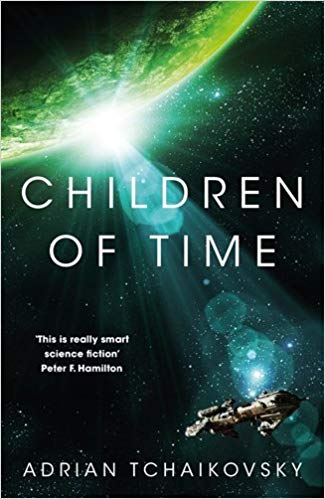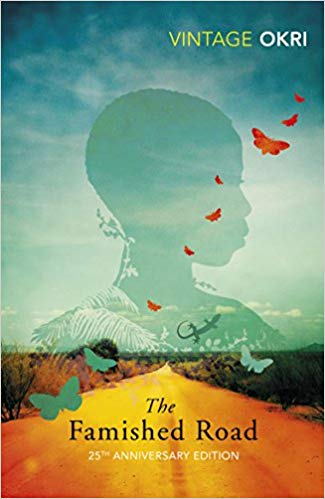For book number 14, I was given the choice between:
‘Titus Groan’ by Mervyn Peake
‘Children of Time’ by Adrian Tchaikovsky
‘Anno Dracula’ by Kim Newman
Within these three are two books I had already started to read but given up on – ‘Titus Groan’ and ‘Children of Time’. Fancying a read of a book that won the 2016 Arthur C. Clarke award for best science fiction, it was Tchaikovsky’s novel that won out in the end.
Goodreads summary:
A race for survival among the stars… Humanity’s last survivors escaped earth’s ruins to find a new home. But when they find it, can their desperation overcome its dangers?
WHO WILL INHERIT THIS NEW EARTH?
The last remnants of the human race left a dying Earth, desperate to find a new home among the stars. Following in the footsteps of their ancestors, they discover the greatest treasure of the past age – a world terraformed and prepared for human life.
But all is not right in this new Eden. In the long years since the planet was abandoned, the work of its architects has borne disastrous fruit. The planet is not waiting for them, pristine and unoccupied. New masters have turned it from a refuge into mankind’s worst nightmare.
Now two civilizations are on a collision course, both testing the boundaries of what they will do to survive. As the fate of humanity hangs in the balance, who are the true heirs of this new Earth?
The last humans in the galaxy are desperate. Having left a dying Earth, to stumble across a perfectly terra-formed planet seems too good to be true – and it is. On its surface, evolving and developing for millennia, is a species that won’t be so willing to give up their planet, even to the humans that feel it rightfully belongs to them. This collision course, played out over many years, is the central narrative of Adrian Tchaikovsky’s ‘Children of Time’, yet it manages to explore ideas about society, religion and what truly is out there with aplomb.
In the opening chapter, an act of terrorism sabotages a human experiment designed to terraform a planet. Within the spaceship were monkeys as well as a virus designed to allow the primates to develop and evolve on their new planet. A plan developed by Avrana Kern, the explosion caused by the terrorist kills the monkeys and sends the virus out into the atmosphere. A last ditch attempt by Kern to escape sees her upload her image into her escape ship’s computer, essentially forming a computer/human symbiote, one that would eventually be reunited with the planet which her plan had helped to form.
What works really well throughout the novel is that the story is told through two different narrative threads. The Gilgamesh, the ship which carries the hopes of a planet, and its story are seen through the eyes of Holsten Mason, a classicist. Down on Kern’s planet, it isn’t the primates that she had hoped for who benefitted from the virus, but spiders. Whilst the human struggles of trying to find a place in the galaxy play out on the Gilgamesh, the evolution of the spiders and their world adds another layer to the engaging storyline as each generation builds upon the experience of the last.
Tchaikovsky uses some clever narrative techniques to allow the narrative to last the thousands of years that we see play out over six hundred pages. Rather than overwhelm the reader with names, the focus is only ever on three spiders (Portia, Bianca and Fabian), each of which is the name also bestowed on the next generation. As for the humans, stasis sleep and cryo-chambers mean that Mason, as well as Isa Lain (the main secondary character) and other key figures on the ship, can be frozen and woken as the narrative requires it. Whilst this might otherwise feel a little bit forced, Tchaikovsky works the story in such a manner that it never feels too knowing.
Though the human arc is fascinating, including mutinies, in-fighting and a love story, it is definitely the spiders’ story that is more interesting. Presumably chosen for the phobias they engender in many people, the spiders create a society, fight off potential enemies, develop what effectively amounts to religions and conduct experiments. The intelligent way that they are presented, all the way through to the end collision between the two species that serves as the ending to the book, makes them a consistently empathetic group, especially when contrasted with some of the more egomaniacal characters that are involved with the running of the Gilgamesh.
‘Children of Time’ is the very definition of a page turner – its six hundred pages fly past as Tchaikovsky effortlessly takes us through a tale that lasts many thousands of years with verve and panache.




